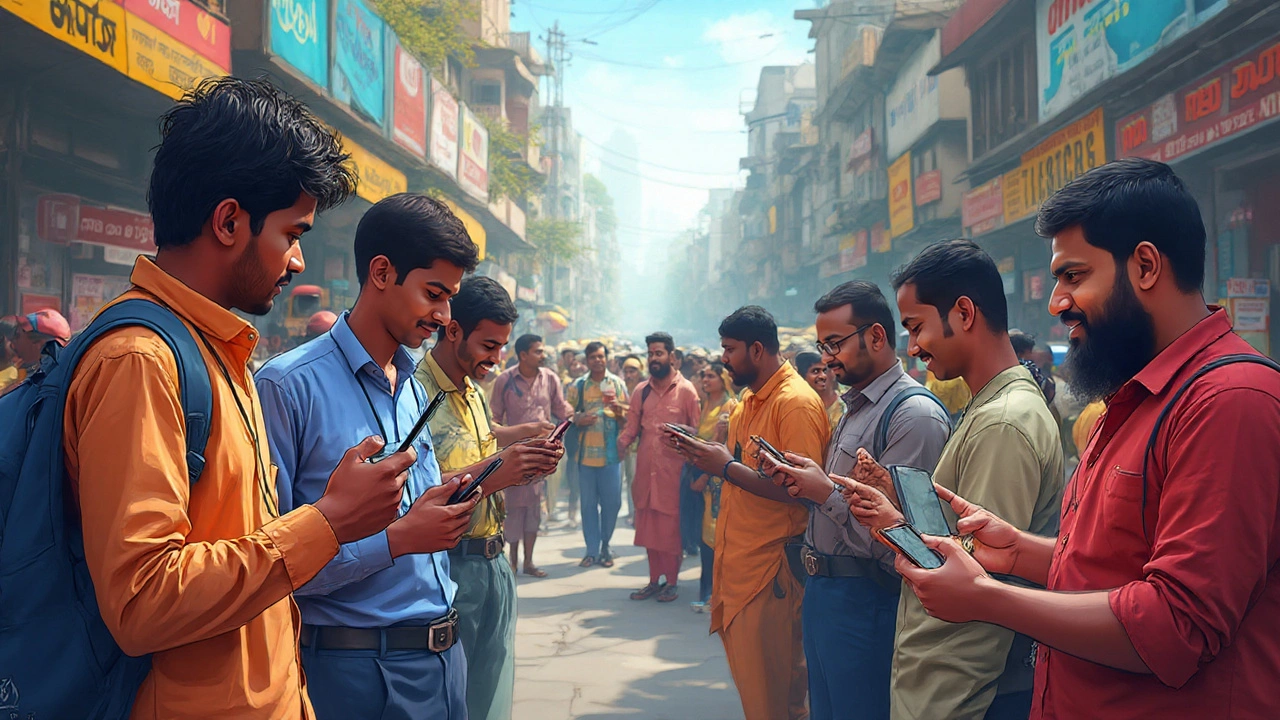You probably interact with dozens of digital platforms every single day—sometimes without even thinking about it. Grab your phone, scroll through your feed, shop online, or join a virtual classroom: each click opens the door to a whole ecosystem designed to connect, serve, and sometimes distract you. Digital platforms have become the backbone of daily modern life, influencing everything from how we learn to how we work and stay in touch with friends. But what exactly is a digital platform, especially a “common” one? And why should you care? It’s hard to picture a day without them, whether you’re checking your email, ordering food for dinner, or streaming videos with your cat snuggled beside you (shoutout to Luna for being my loyal, fur-covered tech assistant). The world runs on platforms—and, sometimes, it really pays to understand how all these moving digital parts fit together.
The Building Blocks: What Makes a Digital Platform ‘Common’?
Let’s strip away the buzzwords and keep it straight— a digital platform is really just an online space where lots of people or businesses can connect, share, create, and trade stuff. But there’s a twist: a common digital platform isn’t just any website or app. It’s one that’s widely accessible, used by millions, and is so deeply woven into modern routines that you barely notice how often you depend on it.
Think of platforms as giant, digital playgrounds. They set the rules and boundaries— not for swings and slides— but for data, transactions, and connection. For a platform to claim the “common” badge, it needs three things: real scale, wide variety of users, and options for interaction. If a website is only used by twenty or thirty people, it’s not a common platform. But when millions log on daily, share stuff, buy things, or collaborate, you’re in the big leagues: think Facebook, Google, WhatsApp, or Steam.
What’s surprising? Not every platform looks the same. Some, like a file-sharing Dropbox or Google Drive, are about storing and moving digital stuff around. Others, like Amazon or Flipkart, connect buyers and sellers in massive online bazaars. Then there are content-sharing platforms—YouTube, TikTok, even education-driven ones like Coursera and Khan Academy. Each serves a slightly different purpose, but they all work as a bridge between people and services in cyberspace.
Platforms usually don’t own everything that happens on them. They just create the tech, set the rules, and let others do most of the heavy lifting. That’s how marketplaces scale fast. Instead of stocking their own shelves, they let users or companies stock them. If you build a YouTube channel or sell handmade jewelry on Etsy, you’re part of the platform’s engine.
One standout fact: The most common platforms are so deeply embedded that entire economies pivot on them. Many small businesses rely on Facebook or Instagram to reach customers. Schools deliver lessons on Google Classroom or Microsoft Teams. Even local governments push notifications or run services through common platforms— lowering barriers for citizens to get stuff done online.
But common doesn’t always mean safe or simple. Platforms collect data every time someone logs on, likes a post, or fills their online shopping cart. Knowing what you’re handing over and how to tighten up privacy is just as much a part of “digital literacy” as being able to use the basics. Strong passwords, two-step authentication, and checking those privacy terms really matter.
Types of Common Digital Platforms and Their Unique Superpowers
The digital world is... messy. One platform does not fit all. Here’s where it gets interesting—common digital platforms split into a few major types, each with its own style, crowd, and reasons for being addictive (or just useful):
- Social media platforms: Facebook, Instagram, Twitter/X, LinkedIn, Snapchat. These connect people, share stories, memes, life updates, job opportunities, and even global movements.
- E-commerce platforms: Amazon, Flipkart, eBay, Shopify. From midnight gadget purchases to rare collectibles, these connect sellers with millions of ready buyers.
- Content and media platforms: YouTube, Netflix, Spotify, Medium. Want to watch cat videos or binge your favorite show? These serve up an endless library of entertainment, news, or music—on demand.
- Educational platforms: Coursera, Khan Academy, Udemy, Byju's, Google Classroom. Millions of learners log in, pick up new skills, and earn certificates (good news for your next job hunt!).
- Collaboration platforms: Google Workspace, Slack, Microsoft Teams, Zoom. Work meetings, document editing, project management—all in one place (and can even make group work only slightly less painful).
- Communication platforms: WhatsApp, Telegram, Signal, Discord. Group chats, private messages, community calls—the lifelines for staying connected beyond email.
- Marketplace platforms: Airbnb, Uber, Ola, Zomato, Swiggy. These connect folks needing a ride, a stay, or a quick meal, directly to the people providing them.
What makes each of these platforms powerful is not just the size of their audience, but the richness of interaction. For instance, YouTube users do way more than just watch—they comment, share, like, follow creators, and sometimes build entire careers around their channels. The best platforms spark creativity and entrepreneurship, not just consumption.
If you scroll through WhatsApp or post on Instagram, you’re not just a user—you’re the reason these platforms exist at all. Each new connection, selfie, or meme shared boosts the value of the platform for everyone. That’s what’s called “network effect”: the more people join, the more useful (and sticky) the platform becomes. Ever tried moving your whole friend group to a new messaging app? Near impossible—those network ties are tough to break.
Fun tip: Platforms constantly roll out new features to keep you hooked—think Stories, Reels, Shop tabs—or to keep up with upstart rivals. Take a moment to explore the settings menus and experimental tools. You might find shortcuts, privacy tweaks, or even some fun Easter eggs that make your experience smoother.
And don’t forget accessibility. The best digital platforms are built for everyone: they work on basic phones and flashy laptops, in fast cities or slow rural areas, through screen readers for the visually impaired, and with language options for global reach. A platform’s popularity often tracks closely with how easy and inclusive it makes technology feel.

How Digital Platforms Shape Learning, Work, and Daily Life
It’s not an exaggeration to say life would grind to a halt without these platforms—especially after 2020 and the rise of hybrid everything. Here’s where “common” digital platforms leap out of your browser window and reshape the way you study, earn money, and chill out.
Education first. During lockdowns, entire school districts flipped their blackboards onto digital platforms. Google Classroom turned into real classrooms for tens of millions. Zoom became the new school bus, unfair pop quizzes and all. But even after the world opened up, these platforms stuck around. Kids now upload homework as PDFs, join study groups on Discord, or learn coding on Scratch. Platforms like Coursera and Udemy blur the lines, letting adults upskill for new careers from the comfort of their kitchen tables.
On the job front, digital platforms drive remote work revolutions. Slack’s funny GIF threads (and endless notifications), Google Docs’ real-time document editing, and Zoom’s virtual meetings make it possible for people across time zones to act like they’re in the same room. Project management tools like Trello or Notion keep teams moving forward, while portfolio platforms (think GitHub or Behance) help creatives and coders show off their skills to employers anywhere in the world.
Business owners benefit, too. Selling on platforms like Amazon or Flipkart levels the playing field for small entrepreneurs who would otherwise never crack into big markets. Social media platforms aren’t just about selfies—they’re free marketing engines for anyone with a product or message. Even local shopkeepers list on WhatsApp Business and Instagram Shops.
For daily life? Delivery apps let you skip cooking, ride-sharing platforms cut commute nightmares, and health platforms handle appointments without endless calls. Heck, even my vet appointment reminders for Luna come via digital platforms now—no more lost sticky notes on the fridge.
But it’s not all perfection. Platforms change fast—sometimes faster than rules or society can keep up. Ever notice new privacy alerts, policy changes, or sudden algorithm tweaks? That’s the flip side: your data, preferences, and reach are often at the mercy of companies you don’t control. Digital literacy means keeping up with changes, double-checking sources, and not assuming every shiny new feature is built with your best interests at heart. Bookmark tech blogs, sign up for platform update emails, or follow trusted tech experts online. You don’t want to be caught off-guard when your favorite tool suddenly works differently (or disappears altogether).
Tips for Getting the Most Out of Common Digital Platforms
It’s easy to go on autopilot, using platforms without thinking. But being a bit intentional with your time— and privacy—makes a huge difference in how useful and safe these digital spaces can be. Let’s get into a few practical tips I swear by:
- Regularly update your apps and platforms. Not just for the cool new features, but because updates often patch security holes. Out-of-date apps can be inviting targets for hackers.
- Set strong, unique passwords. If memorizing a dozen passwords feels impossible, use a password manager. And yes, enable two-factor authentication everywhere it’s offered—your data’s worth the extra click.
- Explore settings. Seriously, most people skip this. Tweak notifications, check privacy options (like what’s public or shared), and make sure you actually know who can see your posts or shop history.
- Don’t overshare. That Instagram post tagged with your exact home address? Maybe skip it. Small bits of info can add up and lead to privacy headaches.
- Try new features, but watch for changes. Platforms add (and sometimes remove) stuff fast. If you notice new icons or tools, read what they do before jumping in.
- Back up anything important. Platforms get bought, shut down, or lose data—having your own copy of crucial files, photos, or contacts can save major stress.
- Be kind in comments and group chats. Platforms thrive on engagement, and good, positive vibes build stronger connections for everyone.
- Curate your feed. Use mute, block, or unfollow tools to keep your feed relevant—and your mood healthy. Don’t let toxic content hijack your attention.
- Stay alert for scams and phishing. If a platform prompts you for secret info or a suspicious-looking link pops up, slow down and double-check. If it seems off, it probably is.
- Teach family and friends. Young kids and older relatives need help catching up with digital trends and threats. Sharing simple how-tos, or even troubleshooting over video calls, goes a long way.
Remember, platforms aren’t just about consuming— they’re about connecting, creating, and sometimes even earning. Learn basic content creation skills (photo editing, video recording, blogging) and use platforms to build your personal brand, not just scroll. You’d be surprised how many hobbies can turn into side hustles with a little savvy use of digital tools.
And if you ever get overwhelmed or feel lost in notifications, don’t be afraid to log off, mute a few groups, or switch up how you interact. Platforms are meant to work for you, not the other way round. Just like Luna— who always reminds me that sometimes, screen-free playtime is the best digital detox.






Write a comment: